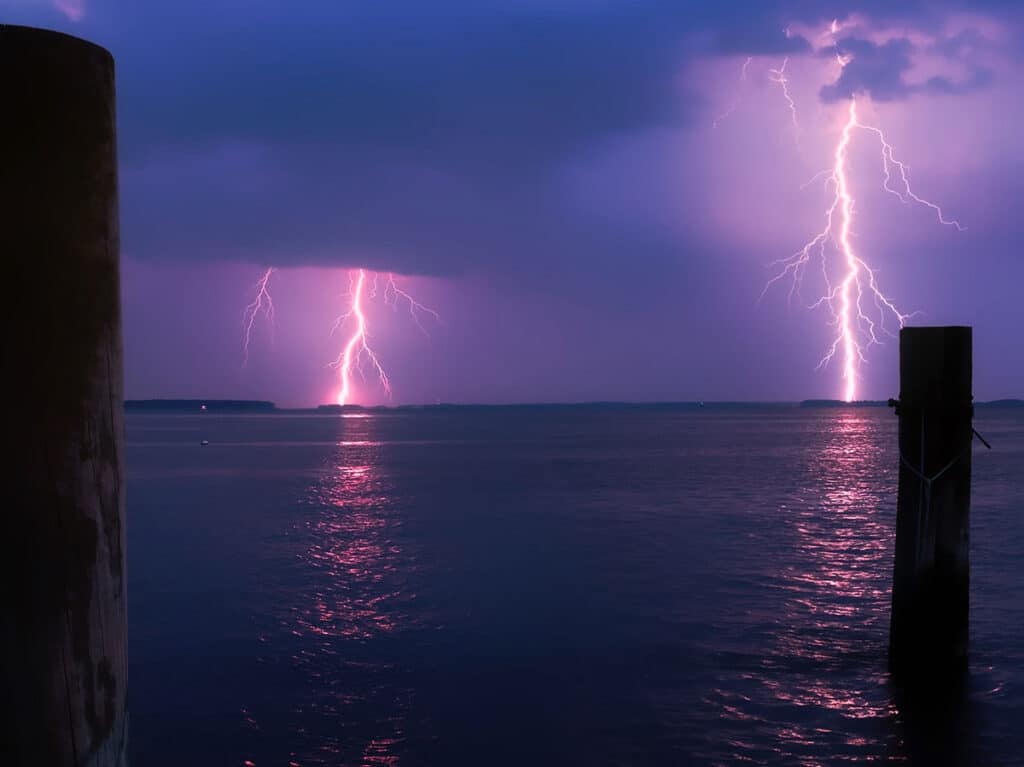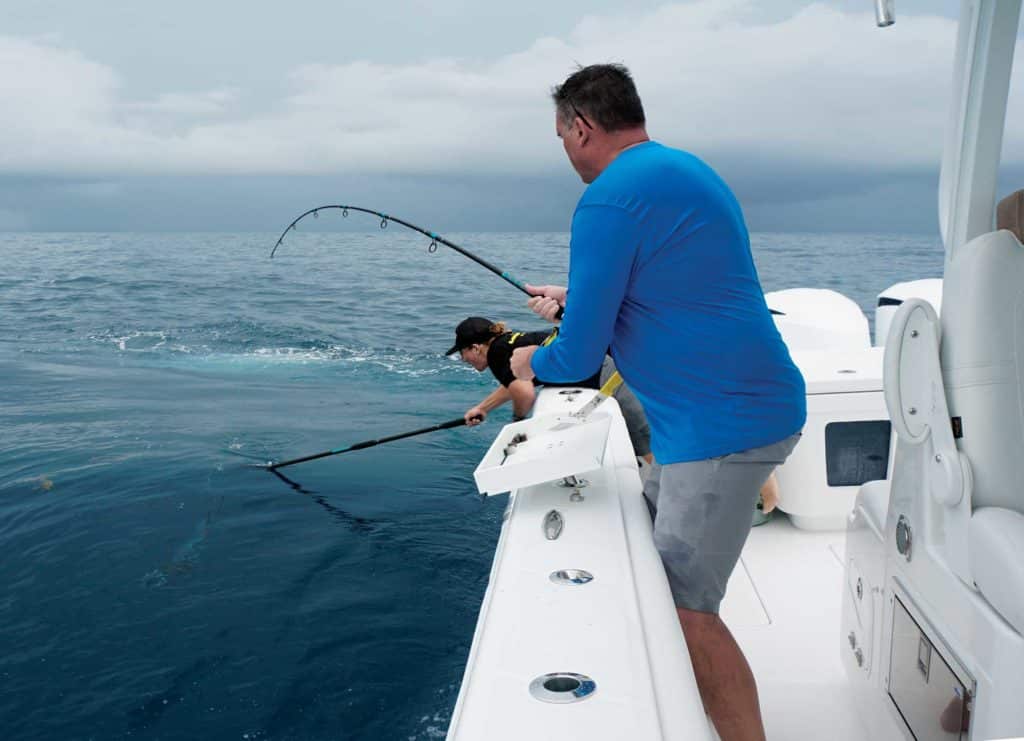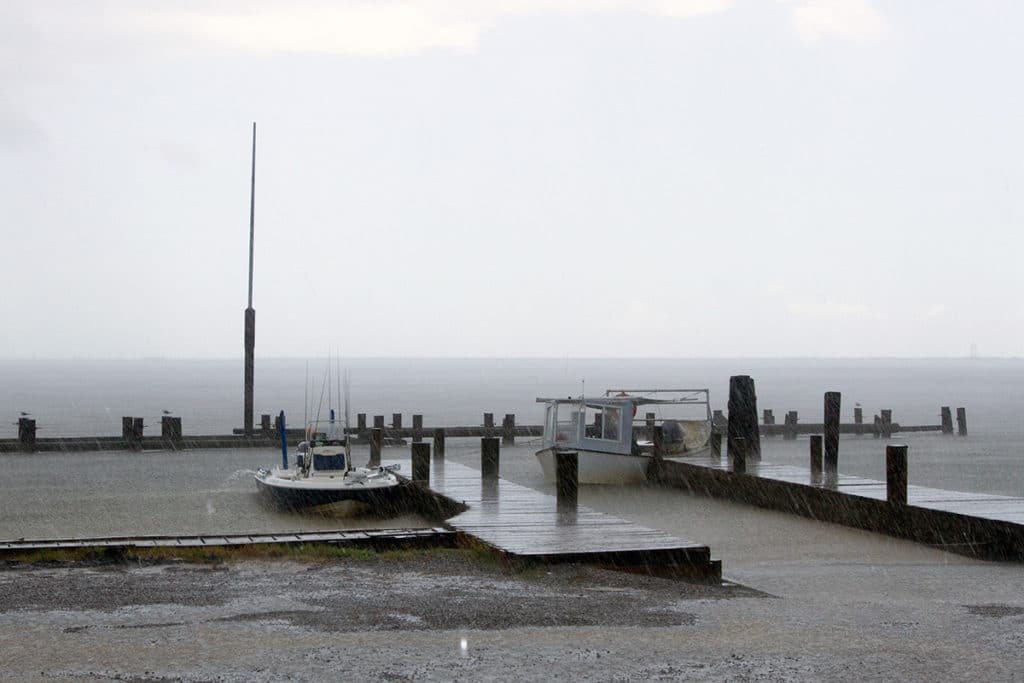
You wake up early, pack your gear and head to the marina, no doubt energized by visions of bent rods and big fish. Then, someone pulls the plug. Could be the captain, could be the charter client — either way, the last-minute indecision and cancellation is a bummer.
Weather is weather and it cares not for human plans, but deciding how and when to bail on a fishing trip can be handled through forethought, honest assessments and mutually fair conclusions. While modern weather forecasting provides the data, personal tolerances frame the likely outcomes.
Some captains may rely on the blanket policy: “Once we leave the dock, it’s a trip and payment is due, regardless of when you want to come in.” Harsh, but short of a legitimate emergency, that’s a fair expectation. However, many fishing captains are more proactive about making fair judgement calls and, at least, discussing the day’s weather outlook with scheduled clients.
Capt. Ryan Harrington, runs inshore, coastal and offshore trips out of St. Petersburg, Florida. When judging a day’s outlook, he bases his decision on three criteria: on-the-water conditions, angler comfort and business factors.
The Fishing Weather Report

Harrington pieces together a comprehensive meteorological outlook by combining details from multiple weather resources. His favorites, Weather Underground, Windy and Windfinder give him a clear picture of what to expect in terms of wind and waves, but he’s also cognizant of seasonal extremes.
“Winter can be tough because when you get winds out of the north, it can cause negative low tides,” Harrington says. “The wind direction can make some areas unfishable due to low water.”
Most folks can handle some rain when the fish are biting — especially during a summer trip — getting soaked just enhances the story. Memories are made in the details, so as long as everyone remains safe, all is well. But lightning is non-negotiable. If lightning is around, no fishing boats should be on the water. Florida summers typically brings the highest potential, and Harrington says the entire season keeps him on his toes.
“The summertime can be unpredictable with pop-up storms,” he says. “You can kind of get a pattern and be okay in the morning, but the afternoons can be dicey in the summertime.
“The problem with the summertime storms, whether you’re using an app or the boat radar, is that they’re not consistent fronts that you can see with much warning. A summertime storm can pop up right over you and dissipate just as quickly, so it’s very difficult to plan that out, even up to the minute.”
For obvious reasons, rough weather gets all the hate. But, as Harrington notes, a gorgeous day does not inherently lead to good fishing.
“Usually the day after a cold front comes through is the day most people want to be on the boat because there’s no cloud cover, clear blue skies — bluebird skies,” he says. “It’s a pretty day, but those fish will shut down a day after the cold front. It’s tough fishing conditions, not necessarily the weather on that day.”
Will You Be Completely Miserable While Fishing?

Particularly for offshore trips, Harrington monitors weather patterns several days out, but he looks to the 24-hour forecast for decision making. Along with the right tackle, baits and waypoints, customers should be able to depend on a charter captain’s judgment.
“I don’t get too much pushback (if weather impedes a trip),” Harrington says. “People are hiring us to catch fish but also for our weather expertise.
“I make the ultimate call on safety, but I like to involve clients in the general decisions. I’m honest with clients. I might tell them ‘It’s gonna be a little rough, but I know that bite’s gonna be really good and it’s worth going.’”
Understandably, Harrington hears plenty of seasickness concerns. He does his best to allay preconceived fears and encourage offshore neophytes to relax and focus on the fishing. But if the old mal de mer crashes the party, it’s decision time.
“If one person in a group gets seasick, I let the group make a decision on whether to go in or keep fishing,” Harrington says. “I tell them ‘You know your group better than I do,’ so that keeps me out of the conversation.”
When the Weather Becomes to Rough to Fish

Harrington believes honest discourse will typically give both parties sufficient time to make the right call. That said, second thoughts are not the captain’s burden.
“Once we leave, it is a trip because the same amount of expenses are involved,” Harrington says.
Notwithstanding his preference for collective decision making, Harrington will cancel a trip when the National Weather Service issues a Small Craft Advisory. In short, sustained wind speeds or frequent gusts have reached 20-33 knots and/or seas or waves 4 feet and greater and/or waves or seas are potentially hazardous.
“That’s about the point it’s unfishable anyway, but our charter insurance does not cover us if we’re out during a small craft advisory,” Harrington says. “If a client came in from out of town, they might not care if it’s blowing 30. But I tell them it’s not even my call at that point, because if we’re out there in dangerous weather and something happens, no one’s covered.”
Extreme weather aside, when Harrington expects uncomfortable or unproductive conditions, he’ll contact his scheduled anglers and give them the option of refunding their deposit. He’ll offer his insight and let the client make the call. “As long as it’s safe, 99 percent of the people still want to go fishing, but I feel better about being honest with people,” he says.








